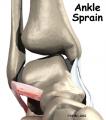Greetings
The cold weather is here! Do you know what that means? It's time for our FALL CUSTOMER APPRECIATION EVENT! Thank you for trusting us with your health and referring your family and friends to our care.
 |
We invite you to a private screening of THE HUNGER GAMES: CATCHING FIRE on Novemeber 25nd, 2013 at 6:30 pm.
As before we will have passes that can be picked up at the clinic on Thursday, November 21st, no more than 2 per client please. We look forward to see you at the movies!
|
We are also happy to announce that Erica Yuzak (Physio) has joined our team to assist in covering the remainder of Paula Calnen's (Physio) maternity leave. Erica brings great energy to our group and is eager to help out our clients.
Kielly Christie (Massage) also has a little "bun in the oven" but hopes to continue to see her clients up until Christmas.
Jen MacKinnon (Physio) successfully challenged the exams to become a Certified McKenzie Therapist! McKenzie was a passionate physiotherapist whose theories are now well supported with scientific evidence. The McKenzie Method has become a standard in our field.
*************************************************************************
A McKenzie assessment is based on the simple cause and effect between pain behavior as well as pain response to repeated movements, positions and activities. Based on movement preferences, a client’s condition is classified as postural (end range stress on normal structures), a dysfunction (end range stress on shortened structures) or derangement (anatomical disruption).
McKenzie treatment emphasizes education and active patient involvement in order to decrease pain quickly and restore function and independence, minimizing the number of clinic visits. In more complicated cases, a certified McKenzie Therapist will know when to provide additional advanced hands on techniques.
*************************************************************************
| Have you ever had an ankle sprain? The American Academy of Orthopaedic Surgeons estimates that 25,000 experience an ankle sprain each day. Read below for tips on how to best deal with an Ankle sprain if it happens to you. |
 |
Balance and Strengthening for Ankle Sprain
When you sprain an ankle, often the last thing you want to do is move it for any reason.
Resting and applying ice are the traditional remedies, however your physiotherapist may be able to help you get back to your usual self faster with some quick exercises early on. You may find that the experience is actually less painful than just letting it heal on its own.
Early Intervention Helps
It’s tempting to just try to wait out the injury and only seek out physiotherapy if the pain persists. It’s very common for emergency rooms or doctors to simply send patients with acute sprains home, asking them to ice it and keep it immobile. While this works for many people and is appropriate in the the early stages of recovery, nearly a third continue to have pain or other symptoms long after the injury. In fact, sprains seem to cause about 13% of all cases of arthritis that arise from an injury, so the effects of avoiding treatment early on can be quite long lasting.
A study of those receiving a consultation and treatment with a physiotherapist right after the sprain and those simply self-treating at home after the initial emergency treatment found that those who underwent physiotherapy, regardless of the exact treatment plan, had much better recovery after six weeks and three months: they returned to work faster, they had better range of motion, their balance was better, and they had much less pain.
Physiotherapy Can Help You Hurt Less – Faster
You may find that you are hesitant to begin physiotherapy right after an injury because you are afraid of hurting yourself further. However, a study examining the traditional method of resting, icing, bandaging, and elevating an ankle after a sprain compared with treatment of a sprain with physiotherapy found that the group undergoing physiotherapy used less pain medication during those first few difficult days to manage the healing process. The authors concluded that the exercises, while possibly uncomfortable at the time, may have made for a less painful recovery overall.
What to Expect
One of the biggest benefits of having a physiotherapist evaluate your ankle sprain and prescribe treatment is that the balance between immobilizing a joint after injury and getting back into physical activity is very delicate, and getting that timing right will mean a quicker, fuller recovery. Although every treatment plan is different, typically your physiotherapist will have you keep the ankle still for a short time to get the swelling down, but then will work on rehab exercises such as range of motion, strength, and balance, with you soon after.
An Ounce of Prevention
The best part about receiving proper care from your physiotherapist is not just that you’ll feel better faster, it’s that the right balance and strengthening program can actually help you prevent future sprains. Multiple studies have shown that the incidence of ankle sprains decreases notably when athletes undergo regular balance training, and the benefit was most pronounced for those who had sustained a sprain in the past.
Physiotherapy interventions early in the stages of recovery for an ankle sprain can help you get back on your feet more quickly, with less pain along the way, and help you prevent a future injury of the same type. For prevention work or for treatment of an acute ankle sprain, contact your physiotherapist to determine an appropriate treatment plan.
Read more in our Ankle Sprain and Instability patient guide.
References
- Hultman K, Faltstrom A, Oberg U. “The effect of early physiotherapy after an acute ankle sprain.” Adv in Physiotherapy 2010; 12:65-73
- Valderrabano V, Hintermann B, Horisberger M, Fung TS. “Lingamentous posttraumatic ankle osteoarthritis.” Am J Sports Med 2006; 34:612-620
- Hing W, Hume PA, Lopes J, Reid DA. “Comparison of multimodal physiotherapy and “R.I.C.E.” self-treatment for early management of ankle sprains. New Zealand J Physiother 2011; 39(1):13
- Roebroeck ME, Dekker J, Oostendorp RAB, Bosveld W. “Physiotherapy for Patients with Lateral Ankle Sprains: A prospective survey of practice patterns in Dutch primary health care.” Physiotherapy 1998; 84(9):421-432
- Valovich McLeod TC. “The Effectiveness of Balance Training Programs on Reducing the Incidence of Ankle Sprains in Adolescent Athletes.” J Sport Rehab 2008; 17:316-323
- McGuine TA, Keene JS. “The Effect of a Balance Training Program on the Risk of Ankle Sprains in High School Athletes.” Am J Sports Med 2006; 34(17):1103-1111
- Verhagan E, van der Beek A, Twisk J, Bouter L, Bahr R, van Mechelen W. “The Effect of a Proprioceptive Balance Board Training Program for the Prevention of Ankle Sprains: A Prospective Controlled Trial.” Am J Sports Med 2004; 32(6):1385-1393